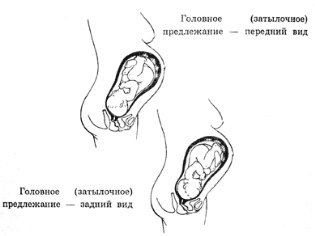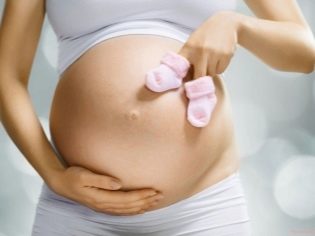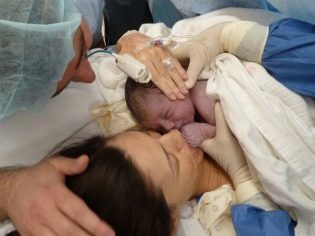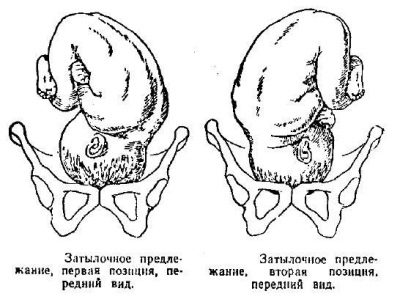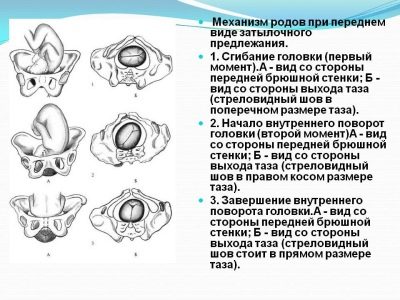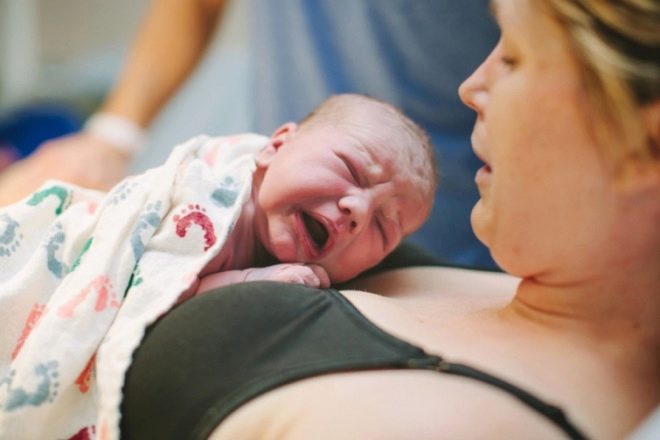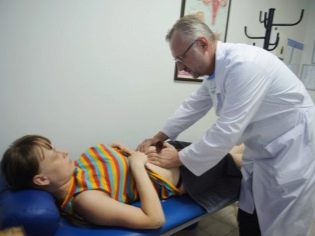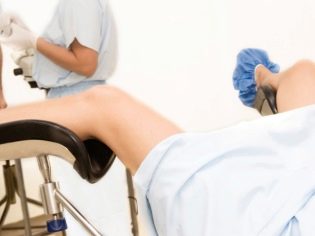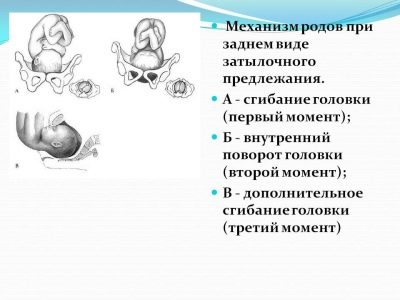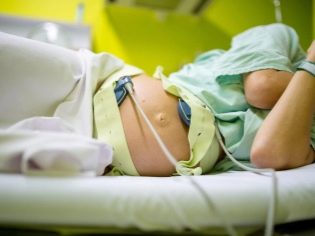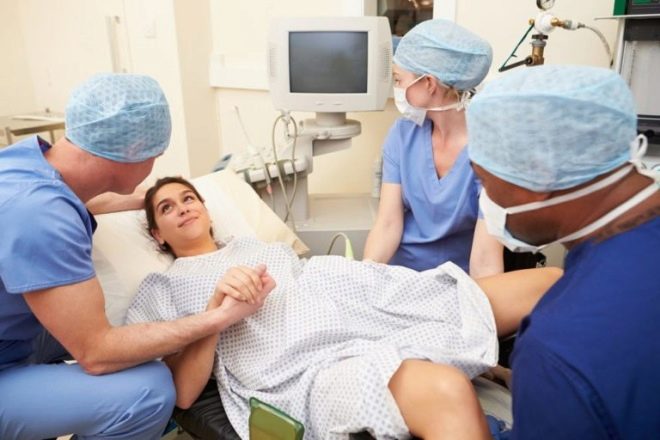What are the back and front types of occipital presentations of the fetus and what do they affect?
In obstetric practice, there are cases when the baby is located in the uterus down the nape. Doctors call this presentation of the head, or rather, the occipital. This article will talk about what the front and rear types of occipital presentation are and what they affect.
What it is?
The location of the baby in the womb is very important. It largely determines the course of pregnancy as a whole. So, if a baby is physiologically located, then the period of carrying a baby is less complicated by the development of any dangerous pathologies.
The presentation of the fetus in the uterus is also an important condition for choosing the method of delivery. Headache previa, according to statistics, is found in obstetric practice in the vast majority of cases. The occipital variant is the most favorable.
When occipital previa baby in the womb is in a somewhat bent position. In this case, his head, or rather, the back of his head is located closest to the birth canal. At the time of birth, it is the occipital part of the head that comes first, and then other areas of the body.
Doctors have several options for occipital presentation:
- the front, which often develops in the first position;
- back, which develops with the second position.
Birth Biomechanics
In the process of its passage through the birth canal during the birth of a child performs a series of active and passive actions. This whole complex biological process is called the birth biomechanism. During its movement, the fetus performs extension, bending, and rotation around its own axis.
The anterior and posterior type of occipital presentation have several features in the biomechanism of labor. It is conditionally possible to divide the entire process of the birth of a child into light into several successive events.
Anterior type occipital presentation
The onset of labor activity is accompanied by the fact that the fetal head is bent. Baby brings his chin to his chest, and the position of his body begins to gradually change. Thus, the first moment of labor is due to the fact that the head of the fetus begins to descend before entering the small pelvis.
The next moment is the inner turn of the head. As the head continues to move through the birth canal, it is forced to pass through a series of obstacles and restrictions. So that the head of the child continues to move, and its internal (correct) rotation takes place around its own axis. It occurs in a place where a wide part of the female pelvis passes into a narrow one.
Then gradually the head begins to unbend. This happens already at the exit of the small pelvis. At the same time, the fetus begins to deflect its head slightly towards the sacrum. The gradual advancement and extension of the head leads to its birth. First, the back of the head is born, then the parietal part of the head, after it the forehead, the main parts of the face, and then the chin.
After the birth of the baby's head, the active birth of the rest of the body begins. For this, an inner turn of the shoulder joints of the baby and an outer turn of the head first take place.Next, the upper end of the body of the fetus begins its advancement through the birth canal. At birth, the shoulders of the child's head turns to the left or right leg of his mother.
Further, under the influence of active contractions of the uterus, a strong bending of the fetal body occurs in the region of the thoracic spine. This contributes to the fact that first comes to the light front shoulder, and then the back. After the appearance of the handles, the birth of the other half of the body begins. This happens much easier.
Rear Type Occipital Presentation
Obstetricians and gynecologists consider this option as the position of the fetus, when the back of his head is facing the sacrum. It is believed that the development of such a variant of the location of the fetus in the uterus can lead to various states. These include:
- anatomical features of the structure of the female small pelvis;
- reduced functionality in the work of the muscular system of the uterus;
- individual shape of the fetal skull.
Obstetrician-gynecologist can determine the rear type of occipital presentation of the fetus even during a routine vaginal examination. At the same time, he determines that the small spring on the child's head is in the region of the sacrum, and the large is closer to the heart.
The beginning of labor leads to the fact that the head of the fetus is bent. In this case, its movement occurs in such a way that it moves through the wide part of the pelvis with its oblique size. It is on average about 10.5 cm.
The next important step in the biomechanism of labor is the internal rotation of the head. In contrast to the front type, with the rear type of occipital presentation, an incorrect head rotation occurs. At the same time, it turns only 45 or 90 degrees.
The next stage of labor is a gradual maximum bending of the head. In this case, the fixation point is already the forehead. The consequence of this movement is that the back of the head to the region of the suboccipital fossa appears to the light.
After this, another stage of birth begins. It lies in the fact that the head of the fetus begins to gradually unbend. It is important to note that in this process there are two points - supports and fixations. Point of support is the front surface of the coccyx, the fixation point is the suboccipital fossa. Active contractions of the uterus contribute to the appearance of the forehead, and then the rest of the face. At the same time they are located in the direction of the heart. The further stages of the birth of the remaining parts of the baby’s body occur almost as well as in the case of anterior type of occipital presentation.
After extension of the head, its external rotation occurs, as well as the internal rotation of the hanger. It is important to note that in this period there may be certain difficulties. So, it may take some time. In order for the remaining parts of the fetus to be expelled from the uterus, active contractions of the uterine walls will be required.
At this time, the muscular system and soft tissues are subjected to a rather large load. Intra-abdominal pressure at the same time reaches high values.
If this period lasts too long, it can be dangerous for the fetus. In this case, the risk of birth injury increases.
With the successful completion of this period, the upper shoulder girdle of the child is born, and then the second half of his body is born. Thus, it becomes clear that childbirth with the rear type of occipital presentation is somewhat harder than with the front. During the course of the birth process, careful medical observation should be carried out. If during the birth some sudden situations occur, the delivery tactics may change.
During childbirth, doctors necessarily evaluate the general condition of the expectant mother. To do this, they determine it has a number of different indicators. So, it is necessary to control the pulse and blood pressure. An obstetrician-gynecologist assesses the severity of pain, as well as the dynamics of their growth.If necessary, the expectant mother can be administered drugs. Quite often, doctors resort to the appointment of antispasmodics. This helps to slightly reduce pain, as well as relieve spasm when it occurs.
Monitoring the contractile activity of the uterus is a very important point. To do this, determine the frequency, intensity and amplitude of uterine contractions and many other parameters.
To assess the contraction of the uterus, doctors resort to performing cardiotocography. If necessary, they can conduct such a study throughout the entire period of labor or determine the reduction of the uterus as necessary.
The initial period since the beginning of labor activity is characterized by the definition of cervical dilatation. This indicator is also necessarily taken into account and controlled by doctors in the management of labor. It is believed that in multiparous women, the rate of cervical dilatation is slightly higher than in women who give birth to first-born children.
Assessment of the condition of the baby is very important. It allows doctors to determine in a timely manner the various complications that may develop during childbirth. Thus, an obstetrician-gynecologist necessarily determines the heartbeat of a child, assesses its activity, as well as how it moves during its birth through the birth canal.
During childbirth, in the back of the occipital presentation, a very dangerous condition for the baby can occur - asphyxia. It is characterized by the fact that the body of the fetus is experiencing a strong oxygen deficiency. Such a situation may develop if the biomechanism of labor is violated. With long standing head in the pelvic cavity, the threat of asphyxiation increases many times.
To prevent this, doctors must evaluate the general condition of the mother and fetus. If necessary, they may resort to the management of drugs that will stimulate generic activity.
On the biomechanism of labor at the front view of occipital presentation, see the following video.

